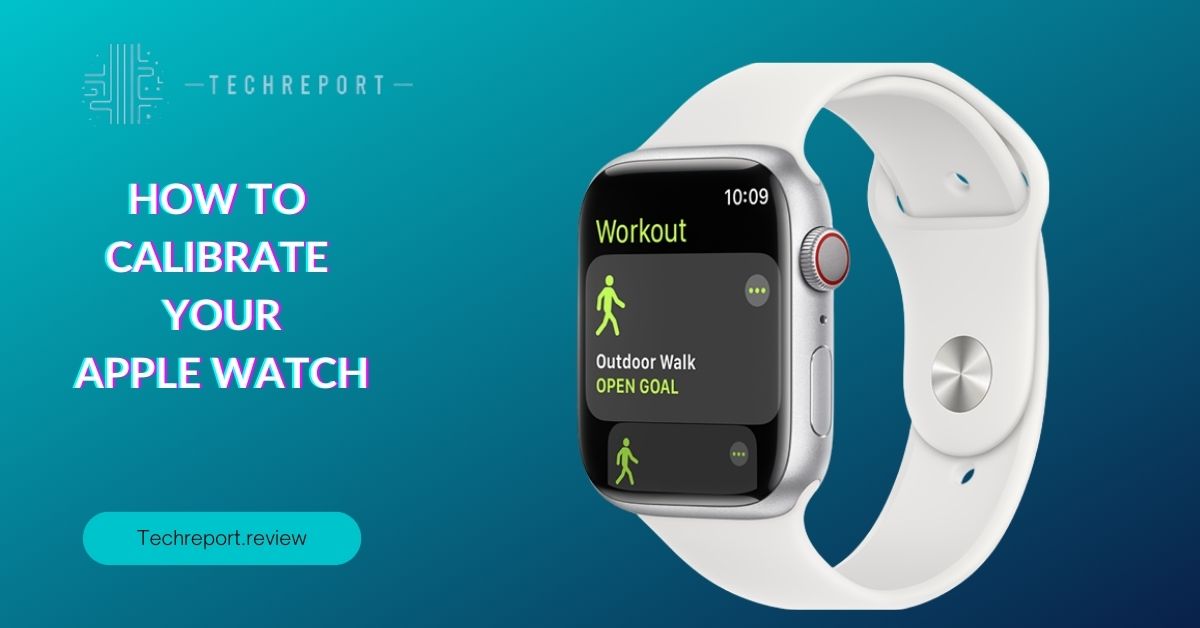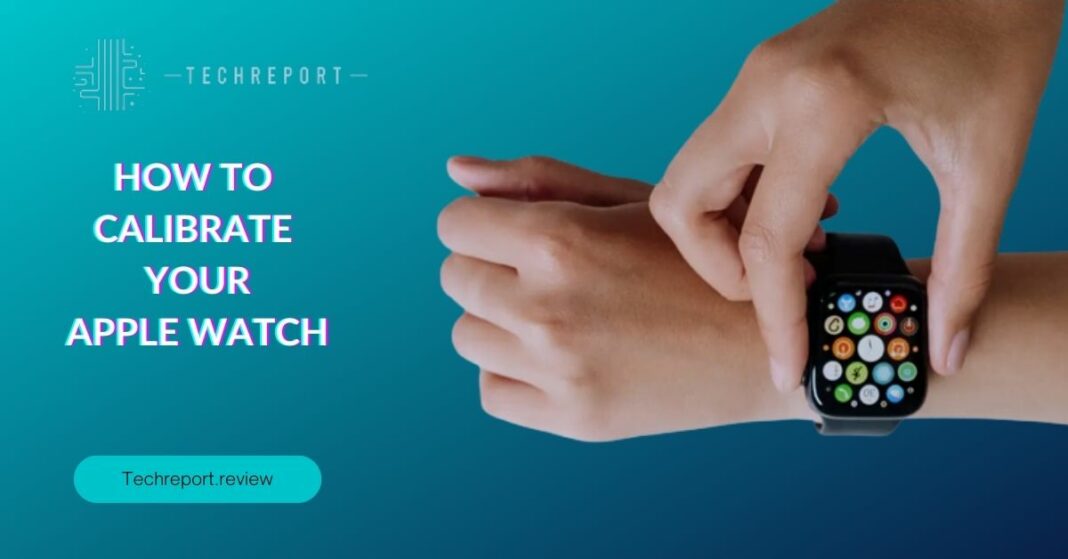Calibration is a crucial aspect of owning an Apple Watch that often goes overlooked. At its core, calibration involves fine-tuning the sensors and tracking capabilities of your device to ensure accurate and reliable data. Whether you’re an avid fitness enthusiast or someone who relies on the watch for daily activity tracking, calibration plays a pivotal role in optimizing performance.
Calibrating an Apple Watch means customizing it to match your movements, habits, and preferences. This process enables the watch to provide precise measurements for step counting, distance tracking, heart rate monitoring, GPS accuracy, and more. Calibration empowers you to get the most out of your Apple Watch and unlocks its true potential.
In this comprehensive blog, we will delve into the world of Apple Watch calibration, guiding you through step-by-step processes and sharing expert tips for achieving optimal accuracy. We will explore various aspects of calibration, including calibrating the step counter, GPS, heart rate monitor, compass, elevation tracking, and sleep tracking.
You will discover how to fine-tune your Apple Watch for specific activities such as swimming, indoor workouts, outdoor running, and cycling. We will cover both manual calibration methods and built-in features available on the watch. Additionally, you’ll gain insights into the benefits of regular calibration, how often you should calibrate your Apple Watch, and troubleshooting common calibration issues.
Whether you’re a fitness enthusiast, a health-conscious individual, or simply seeking to get the most out of your Apple Watch, this blog will empower you to master the art of calibration and elevate your device’s performance to new heights. Get ready to unleash the full potential of your Apple Watch as we embark on this journey to precision and accuracy!
What is Calibration and Why Does Your Apple Watch Need It?

Calibration, in the context of smartwatches like the Apple Watch, refers to the process of adjusting and fine-tuning the internal sensors and tracking mechanisms to deliver accurate and reliable data. Smartwatches are equipped with a variety of sensors, such as accelerometers, gyroscopes, heart rate monitors, GPS modules, and altimeters. These sensors work together to track various aspects of your activity and health.
However, the effectiveness of these sensors can be influenced by factors like individual movement patterns, body characteristics, and environmental conditions. Calibration aims to account for these variations and customize the watch’s tracking capabilities to match your unique characteristics and usage.
The Apple Watch is renowned for its comprehensive fitness and health tracking features, making it a powerful companion for users pursuing an active lifestyle. The sensors in the watch work harmoniously to monitor steps, distance, heart rate, elevation, sleep patterns, and more. GPS functionality enables accurate location tracking during outdoor activities, while the compass ensures precise navigation.
For example, the step counter relies on the accelerometer to detect your movement patterns and translate them into step counts. The heart rate monitor uses optical sensors to measure the blood flow beneath your skin, providing real-time heart rate data. The GPS module determines your location and records the routes taken during workouts.
Regular calibration is essential for maintaining the Apple Watch’s accuracy and optimizing its performance. By calibrating the watch, you ensure that the data it provides aligns with your actual activity and health metrics. Some key benefits of regular calibration include:
- Accurate Fitness Tracking: Calibration helps the watch accurately track your steps, distance, and workout intensity, providing more reliable fitness data for setting and achieving goals.
- Improved Heart Rate Monitoring: Calibration fine-tunes the heart rate monitor to account for factors like skin tone and movement, ensuring precise heart rate measurements during workouts and daily activities.
- Enhanced GPS Accuracy: Calibrating the GPS ensures more accurate location tracking, resulting in more detailed maps and more precise tracking of outdoor activities like running and cycling.
- Personalized Insights: A well-calibrated Apple Watch delivers personalized insights into your activity trends, sleep patterns, and health metrics, helping you make informed decisions about your lifestyle.
- Battery Efficiency: Accurate calibration reduces the need for constant sensor adjustments, leading to improved battery life and longer-lasting performance.
- Consistent Progress Tracking: Regular calibration enables consistent tracking of your progress over time, providing a reliable record of your fitness journey.
In conclusion, calibration is a fundamental aspect of owning an Apple Watch, ensuring that its sensors deliver precise and tailored tracking data. By calibrating your watch regularly, you can take full advantage of its advanced features, gain personalized insights, and embark on a journey to a healthier and more active lifestyle.
Calibrating Apple Watch Step Counter and Distance Tracking
The step counter on your Apple Watch is a valuable tool for monitoring your daily activity and setting fitness goals. To ensure its accuracy, calibration is essential. Follow these steps to calibrate the step counter on your Apple Watch:
- Wear Your Watch Properly: To get accurate step counts, wear your Apple Watch correctly on your wrist. Make sure it fits snugly but comfortably, and the watch face is on the top side of your wrist.
- Open the Activity App: On your paired iPhone, open the “Activity” app, which provides a detailed overview of your daily activity.
- Go for a Known-Length Walk: Choose a flat and straight walking path of a known length, such as a measured track or a treadmill. Walk at your natural pace for at least 20 minutes.
- Record the Distance: As you complete the walk, note the actual distance covered during the activity. You can use a measuring tape or a map to determine the precise length.
- Adjust Calibration Data: After the walk, open the “Activity” app again, tap on “Workouts,” then select the “Outdoor Walk” option. Tap “Edit,” and under the “Distance” section, enter the actual distance you walked.
- Confirm Calibration: Your Apple Watch will now use the adjusted calibration data for the step counter. Check the accuracy by walking a short distance and comparing the step count on the watch with the physical count.
Accurate distance tracking is crucial for gauging your progress during workouts and outdoor activities. To ensure your Apple Watch provides precise distance measurements, follow these steps:
- Enable Location Services: For outdoor activities, make sure your Apple Watch has access to GPS by enabling Location Services. On your paired iPhone, go to “Settings” > “Privacy” > “Location Services” and turn it on for the “Activity” app.
- Clear Obstructions: Ensure your watch’s GPS antenna is not obstructed by clothing or obstacles. For optimal satellite reception, keep your wrist exposed to the sky during outdoor activities.
- Stay Connected: Keep your Apple Watch connected to your iPhone during outdoor workouts to improve GPS accuracy. The watch relies on the iPhone’s GPS data for precise location tracking.
- Wait for GPS Lock: Before starting outdoor activities, give your watch a few moments to establish a GPS lock. Stand still in an open area to allow the watch to connect with GPS satellites.
- Repeat Calibration Periodically: Over time, recalibrate your step counter and distance tracking to account for any changes in your walking patterns or outdoor environments.
- Calibrate on Different Terrains: For more accurate distance tracking during outdoor activities, calibrate your watch on various terrains like trails, pavements, and gravel paths.
- Use Third-Party Apps: Some third-party apps offer specialized calibration features for step counting and distance tracking. Explore these apps for additional calibration options.
- Consider an External Pedometer: If you require highly precise step counts for specific purposes, you may opt for an external pedometer that syncs with your Apple Watch.
By following these steps and tips, you can calibrate the step counter and distance tracking on your Apple Watch, ensuring accurate and reliable data for a more meaningful and rewarding fitness journey. Remember, a well-calibrated Apple Watch empowers you to set and achieve realistic fitness goals while accurately tracking your daily activities.
Fine-tuning GPS Accuracy on Your Apple Watch
The Global Positioning System (GPS) is a crucial feature in the Apple Watch that allows precise location tracking during outdoor activities. However, factors like signal interference, atmospheric conditions, and satellite availability can affect GPS accuracy. Calibration helps fine-tune the GPS performance, ensuring more reliable location data on your Apple Watch.
The Apple Watch utilizes a combination of GPS and your paired iPhone’s location data to determine your position accurately. When connected to your iPhone, the watch uses the phone’s GPS signal for more precise tracking. When not connected, the watch relies solely on its built-in GPS.
Calibrating the GPS on your Apple Watch is a straightforward process that ensures you get the most accurate location data during outdoor activities. Follow these steps to calibrate your watch’s GPS:
- Ensure Location Services are Enabled: On your paired iPhone, go to “Settings” > “Privacy” > “Location Services” and turn it on for both the “Activity” app and “Maps.”
- Find an Open Area: To get the best GPS signal, go outdoors and find an open area away from tall buildings and obstructions.
- Activate Workout Mode: On your Apple Watch, open the “Workout” app and select any outdoor activity, such as “Outdoor Walk” or “Outdoor Run.”
- Wait for GPS Lock: Stand still for a few moments to allow the watch to establish a GPS lock. The watch will indicate when the GPS is ready with a green “Connected” icon.
- Start Your Activity: Begin your outdoor workout as usual, and your Apple Watch will now accurately track your location throughout the activity.
Sometimes, despite calibration, you might encounter GPS accuracy issues on your Apple Watch. Here are some common problems and troubleshooting tips:
- No GPS Signal: If your watch cannot establish a GPS signal, move to an open area with a clear view of the sky, and ensure Location Services is enabled on your iPhone.
- Inaccurate Route Tracing: If the GPS is providing inaccurate route traces, ensure your watch is firmly strapped to your wrist, and keep your wrist exposed to the sky during outdoor activities.
- Delayed GPS Lock: If the watch takes a long time to connect to GPS, wait a bit longer or restart the watch to initiate a fresh connection.
- Battery Drain: GPS usage consumes more battery. To preserve battery life during longer activities, consider using the power-saving mode in the Workout app or disabling unnecessary app notifications.
- iPhone Connectivity Issues: If your Apple Watch is not paired with your iPhone or loses connection during an outdoor activity, GPS accuracy may be compromised. Ensure your devices are paired and connected securely.
Remember, GPS accuracy can also be affected by environmental factors, so occasional variations in tracking are normal. Calibrating your Apple Watch’s GPS ensures the best possible accuracy for your outdoor workouts, hikes, and adventures, enhancing your overall experience with the device. If issues persist, consider updating your watch’s software or contact Apple Support for further assistance.
Achieving Better Accuracy with Apple Watch Sensors
The Apple Watch is equipped with an array of advanced sensors that enable it to track various aspects of your activity and health. These sensors play a crucial role in providing accurate data for fitness and health tracking. Understanding how these sensors work and their impact on accuracy is essential for getting the most out of your Apple Watch.
- Accelerometer: The accelerometer detects your wrist movements, allowing the watch to count your steps and estimate the intensity of your physical activities.
- Gyroscope: Working in conjunction with the accelerometer, the gyroscope measures rotation and orientation, aiding in the detection of different activities like running, cycling, and swimming strokes.
- Heart Rate Monitor: Using optical sensors, the heart rate monitor detects changes in blood flow to measure your heart rate. This data is invaluable for tracking workouts, stress levels, and overall cardiovascular health.
- GPS Module: The GPS module determines your outdoor location and records the routes taken during activities like running and cycling, providing detailed maps and accurate distance tracking.
- Altimeter: The altimeter measures changes in altitude, crucial for activities like hiking and climbing, and also assists in determining the number of stairs climbed during the day.
- Compass: The compass helps with navigation and provides direction during outdoor activities, ensuring you stay on the right path.
Calibrating the sensors on your Apple Watch enhances accuracy and ensures the data collected aligns with your unique movements and body characteristics. Here are some simple ways to calibrate Apple Watch sensors:
- Regular Use: Wearing your watch regularly allows it to familiarize itself with your typical movements and habits, leading to better step-counting accuracy.
- Calibrating Step Counter: As discussed earlier, calibrate the step counter by going for a known-length walk and adjusting the calibration data in the Activity app.
- Heart Rate Monitoring: For optimal heart rate accuracy, ensure a snug but comfortable fit of the watch on your wrist, and wear it slightly above the wrist bone.
- GPS Tracking: Follow the steps outlined in the GPS calibration section to ensure accurate outdoor location tracking.
Calibration plays a pivotal role in fitness and health tracking, enabling your Apple Watch to deliver precise and meaningful data. By calibrating the sensors, you achieve better accuracy in step counting, distance tracking, heart rate monitoring, elevation tracking, and more.
Accurate sensor data translates to more informed decisions regarding your fitness routine, enabling you to set realistic goals and track your progress effectively. Additionally, precise health tracking allows you to monitor vital metrics and detect potential health issues.
Whether you’re striving to achieve fitness milestones, improve sleep patterns, or monitor your heart health, sensor calibration empowers your Apple Watch to provide personalized and reliable insights.
Regular calibration is the key to unlocking the full potential of your Apple Watch’s sensors, ensuring that they are finely tuned to your unique characteristics and activities. As you embark on your fitness journey or seek to lead a healthier lifestyle, the accuracy and reliability of your Apple Watch’s sensor data will be an invaluable asset, guiding you toward achieving your goals with confidence and efficiency.
Finding True North: Calibrating Apple Watch Compass
The Apple Watch compass is a valuable tool that enhances your outdoor navigation experience. It provides real-time direction, ensuring you never lose your way during hikes, walks, or explorations. The compass utilizes a combination of hardware sensors, including the magnetometer and accelerometer, to determine the direction you are facing relative to the magnetic north.
With the compass feature, your Apple Watch can display your heading in degrees, show cardinal directions (north, south, east, west), and even provide a digital compass with a rotating bezel to help you find your bearings.
Calibrating the compass on your Apple Watch is vital to ensure precise navigation. The calibration process is simple and should be done whenever you feel that the compass readings are inaccurate or if you travel to a new location. Here’s how to calibrate the Apple Watch compass:
Step 1: Find an Open Area: Move away from any magnetic interference, such as electronic devices, metal objects, or magnets. Choose an open outdoor area where there are no obstructions around you.
Step 2: Open the Compass App: On your Apple Watch, open the Compass app. If you can’t find it on your watch face, swipe down on the watch face and use the search bar to locate it.
Step 3: Calibrate the Compass: Hold your Apple Watch flat in your hand, parallel to the ground. Now, perform a series of three figure-eight wrist motions. This movement helps the watch’s sensors calibrate and compensate for magnetic interference.
Step 4: Check Accuracy: After calibrating, check the compass accuracy by rotating your watch and observing the compass needle’s movement. It should respond smoothly and point to the correct cardinal directions.
Step 5: Repeat if Necessary: If the compass readings are still off, repeat the calibration process. Ensure you are in an open area free from magnetic interference.
Calibrating the compass in different locations and environments is essential to maintain accurate navigation readings. As you travel or move to a new area, environmental factors like magnetic fields and interference can vary. To calibrate the compass in different locations:
- Follow the Same Calibration Steps: Whenever you find yourself in a new location or environment, follow the same calibration steps outlined in section B.
- Stay Mindful of Surroundings: Be aware of nearby magnetic objects or electronic devices that can cause interference. Always calibrate the compass in an open area away from such influences.
- Recalibrate Periodically: As you explore new regions or visit places with strong magnetic interference, recalibrate the compass regularly to ensure accurate readings.
Calibrating the compass on your Apple Watch is essential to make the most of its navigation features. By ensuring accurate direction readings, you can confidently explore the outdoors, hike through unfamiliar trails, and find your way back without any uncertainty. Regular compass calibration will keep your Apple Watch on course, guiding you to new adventures with precision and confidence.
Timing is Key: How Often Should You Calibrate
The ideal calibration frequency for your Apple Watch depends on several factors, including your level of activity, the accuracy of the initial calibration, and the type of activities you engage in. Here are some key factors that can affect how often you should calibrate your Apple Watch:
- Activity Level: If you lead an active lifestyle and use your Apple Watch regularly for workouts and outdoor activities, you may need to calibrate more frequently. Regular calibration ensures accurate tracking of your fitness progress.
- Environment: Your location and surroundings can impact calibration. If you move to a new area or travel to regions with varying magnetic interference, consider calibrating your watch more frequently to maintain accuracy.
- Workout Types: Different workouts may require different calibration frequencies. For activities like running and cycling that rely heavily on GPS, calibrate before each session. For daily step tracking, monthly calibration may suffice.
- Watch Usage: Regular usage, including wearing your watch consistently, can help maintain calibration accuracy. If you don’t wear your watch regularly, you may need to calibrate it more frequently.
The following is a recommended calibration schedule based on the type of activity and its reliance on specific sensors:
- Step Counter: For everyday step tracking, calibrate your step counter at least once a month. If you notice significant discrepancies, calibrate more frequently.
- GPS-based Activities: For activities that heavily rely on GPS accuracy, such as running, cycling, hiking, or outdoor workouts, calibrate the GPS before each session. This ensures precise distance tracking and route mapping.
- Compass: Calibrate the compass when you move to a new location or experience any issues with directional accuracy. Additionally, recalibrate if you notice inaccurate readings during outdoor navigation.
- Heart Rate Monitoring: The heart rate monitor generally does not require regular calibration, as it relies on optical sensors that self-calibrate during wear. However, ensure a snug and proper fit on your wrist for accurate readings.
While following a recommended calibration schedule is beneficial, certain signs may indicate that your Apple Watch requires re-calibration:
- Inconsistent Readings: If you notice inconsistent or erratic readings for step counting, distance tracking, or heart rate monitoring, it may be time to recalibrate.
- Disrupted GPS Accuracy: If your watch is struggling to lock onto GPS signals, or if it displays incorrect routes during outdoor activities, re-calibrate the GPS.
- Compass Inaccuracy: If the compass readings show inconsistent directions or don’t match your actual orientation, consider recalibrating the compass.
- Environmental Changes: If you move to a new location or encounter strong magnetic interference, recalibrate the compass to adapt to the new environment.
- Fitness Progress Plateau: If you feel that your fitness progress has plateaued or you are not seeing expected improvements, calibrating your watch can help ensure more accurate tracking.
By paying attention to these signs and understanding the factors that affect calibration frequency, you can optimize your Apple Watch’s performance and ensure precise tracking of your fitness activities and health metrics. Regular calibration empowers you to make data-driven decisions, achieve your fitness goals with confidence, and enjoy an enhanced overall experience with your Apple Watch.
In Crux
Throughout this comprehensive guide, we’ve explored the significance of calibrating your Apple Watch and how it directly impacts the accuracy and reliability of its various features. Calibration fine-tunes the internal sensors, including the step counter, GPS, heart rate monitor, compass, and more, to match your unique movements, habits, and environment. By calibrating your watch, you unlock its full potential, enabling it to deliver precise and personalized data for your fitness and health tracking needs.
We’ve covered detailed steps and practical tips to calibrate each essential aspect of your Apple Watch. From calibrating the step counter by going for a known-length walk and adjusting calibration data to ensuring accurate GPS tracking during outdoor activities, you now possess the knowledge to achieve optimal calibration.
Additionally, you’ve learned how to fine-tune the heart rate monitor for accurate readings and calibrate the compass to enhance outdoor navigation. The benefits of regular calibration, such as improved fitness tracking, personalized insights, and enhanced battery efficiency, are now within your grasp.
By embracing precision through calibration, you can elevate your entire Apple Watch experience. No longer will you need to second-guess your fitness progress or question the accuracy of your health metrics. With each calibration, you fine-tune your watch to align perfectly with your unique lifestyle and activities.
From conquering your daily step goals to exploring new hiking trails with confidence, your Apple Watch becomes a trusted companion on your journey to a healthier and more active lifestyle. Embrace precision, and you’ll witness the true potential of your Apple Watch unfold as it empowers you to set and achieve meaningful fitness goals.
As you continue your Apple Watch adventure, remember to recalibrate when necessary and stay mindful of environmental changes that might impact accuracy. By mastering the art of calibration, you seize control of your data, harness the power of your watch’s sensors, and embark on a path of precision, performance, and progress.
Congratulations on completing this guide! Now, take what you’ve learned and calibrate your Apple Watch with confidence, knowing that you have the tools to unlock its full potential and elevate your experience to new heights. Embrace precision, embrace progress, and let your Apple Watch be your steadfast partner in achieving your health and fitness aspirations. Happy tracking!
How much did you like our detailed Precision Redefined: How to Calibrate Your Apple Watch Like a Pro. Please share these Blogs with your friends on social media.
Related Blogs
- Is iPhone 14 Worth the Hype
- iPhone 15 Pro
- Apple CarPlay
- Apple Watch
- iPhone 6 vs Nexus 6
- Apple Vision Pro
FAQs about How to Calibrate Your Apple Watch
Can I manually calibrate the heart rate monitor on my Apple Watch?
The heart rate monitor on the Apple Watch self-calibrates during wear, and manual calibration is not required. However, ensure a snug and proper fit of the watch on your wrist for accurate readings. Adjust the band and position it slightly above your wrist bone to optimize heart rate monitoring during workouts and daily use.
What is the best way to calibrate the GPS on my Apple Watch?
For precise GPS calibration, open the Workout app, select the outdoor activity you intend to do (e.g., Outdoor Walk), and wait for the watch to establish a GPS lock. Stand still in an open area, away from tall buildings or obstructions, until the watch displays a green "Connected" icon. This indicates that the GPS is ready for accurate location tracking during your activity.
Why is it essential to calibrate the compass on my Apple Watch?
Calibrating the compass is crucial for accurate outdoor navigation. It ensures that your watch provides precise direction readings, cardinal points, and heading in degrees during hikes, walks, or outdoor explorations. Calibrate the compass whenever you move to a new location or experience any issues with directional accuracy.
Can I calibrate my Apple Watch for different terrains?
Yes, calibrating your watch on different terrains is recommended, especially for GPS-based activities. Calibration on various terrains, such as trails, pavements, and gravel paths, enhances distance tracking accuracy and route mapping during outdoor workouts and activities.
Should I recalibrate my Apple Watch after software updates?
Generally, software updates do not affect the calibration settings of your Apple Watch. However, if you notice any changes in sensor accuracy or tracking after an update, recalibrate the affected sensors to ensure optimal performance.
How can I tell if my Apple Watch needs recalibration?
Look out for signs such as inconsistent readings, disrupted GPS accuracy, inaccurate compass readings, or a plateau in fitness progress. If you encounter any of these issues, consider recalibrating the affected sensors to restore accuracy.
Can I calibrate my Apple Watch for swimming activities?
The Apple Watch does not require manual calibration for swimming activities. Its water lock feature and swim-specific sensors automatically detect swimming motions and track swimming metrics accurately without user intervention.
Can I calibrate multiple sensors simultaneously?
While you can calibrate different sensors independently, it is advisable to calibrate one sensor at a time. This ensures precise adjustments and allows you to focus on the specific sensor's accuracy.
Is there a third-party app to help with Apple Watch calibration?
Yes, some third-party fitness apps offer specialized calibration features for certain sensors. However, it is essential to use reputable apps and follow their instructions carefully to ensure accurate and safe calibration.




























